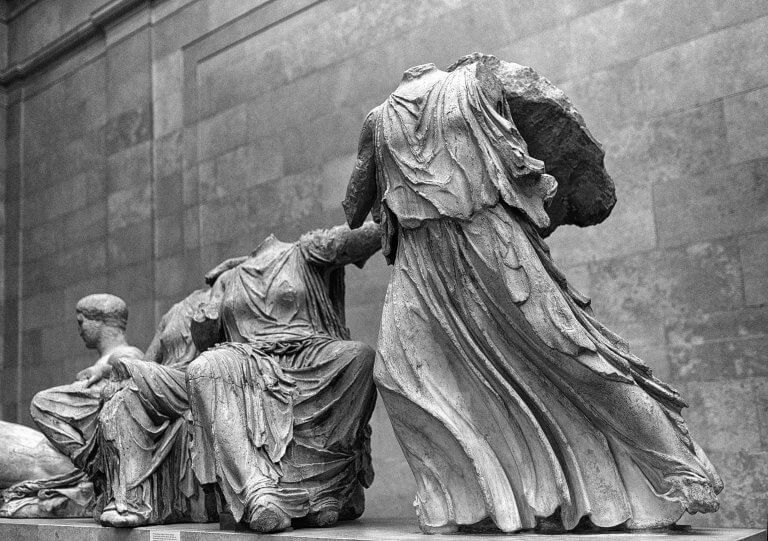
“The wrangling over the Parthenon (or Elgin) marbles displayed in the British Museum has been going on since 1817. This example of British appropriation of another nation’s material culture for (so the argument went) the sake of preservation was the removal of the sculptures and friezes from the Parthenon in Greece by Lord Elgin between 1801 and 1812. There was not universal agreement even amongst contemporary Britons about the validity of this supposed act of heritage conservation.
No less a figure than Lord Byron (who was himself to die for the cause of Greek independence) wrote in Childe Harold’s Pilgrimage:
Dull is the eye that will not weep to see, Thy walls defaced, thy mouldering shrines removed, By British hands, which it had best behoved, To guard those relics ne’er to be restored. Curst be the hour when from their isle they roved, And once again thy hapless bosom gored, And snatch’d thy shrinking gods to northern climes abhorred!
The Elgin (or Parthenon) Marbles first went on display in the British Museum in 1817 and then in its own dedicated salon in 1832 and are a subject of dispute between the British and Greek governments to this day.” (Extract from ‘Museums & Heritage Tourism’ by Chris White)
Stephen Fry has long been an advocate of the repatriation of the Parthenon or Elgin Marbles from the British Museum to Greece. In a recent interview on Time Radio he made some interesting suggestions as to how this might be done and how it could benefit both nations:
“The word ‘loan’ is a big big bone of contention amongst the the British Museum and the British (and Greek) government … It’s about finding a win-win for museum which I think is very easy to do and I’ve laid out all kinds of ways the museum can be enriched by this because you can still have … a Parthenon Experience …
With Lidar iar you can can reproduce every pit and pore of the marble, every shade of every flute and Aris and every triglyph and metape and every little detail. And not only that you can you can do it in different versions and you can do it in of course what will become is still a nascent technology but virtual, augmented ways that will show it in its coloured prime …
So you can tell the stories of it and show it and you can walk through it, and you can but you can also show the story of how it was taken from Athens … And then you can watch it being put into boxes into crates and then you can follow the journey of it going on a train from the station, you know drone shots of it going through the the Alps and the mountains and then round through Scopia …
And then you could watch it being unpacked in the new Acropolis Museum in Athens. You can watch the huge crowds that would come to welcome it. You could would watch the King and and the President and you know premier of the Republic of the Hellenes celebrating and handshaking the replacement in the gaps which still exist where those pieces should go in sight of the real Acropolis.”
Whatever your thoughts on the idea of send back artefacts from whence they came, this certainly sounds like it could be an engaging and rewarding experience all round.
